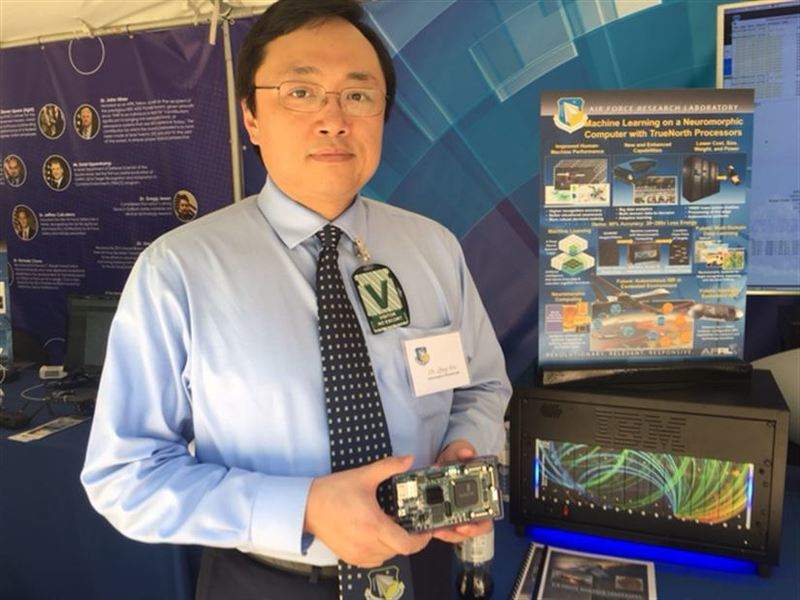

Technology company IBM is developing a new supercomputer powered by 64 TrueNorth chips for use by the US Air Force Research Lab, as part of a collaboration announced in June.
The new ‘brain-like’ supercomputer will be used for analytics involving pattern and object recognition, as well as ‘sensory processing’.
The TrueNorth neurosynaptic system has been designed to imitate human neurons and can convert audio, video and other forms of data received by sensors into symbols, which the computer can then process.
It is capable of performing advanced computations using less energy than conventional chips.
Air Force Research Laboratory principal electronics engineer Qing Wu said: "This is about building more intelligent machines that will work with humans to make human operators and analysts more effective and efficient when dealing with data.
"The major advantage of this chip is it runs machine-learning algorithms, the same ones as we run, the same functionality, same accuracy, but with much less power dissipation."
How well do you really know your competitors?
Access the most comprehensive Company Profiles on the market, powered by GlobalData. Save hours of research. Gain competitive edge.

Thank you!
Your download email will arrive shortly
Not ready to buy yet? Download a free sample
We are confident about the unique quality of our Company Profiles. However, we want you to make the most beneficial decision for your business, so we offer a free sample that you can download by submitting the below form
By GlobalDataThe chip features a million neurons and was developed under the US Defense Advanced Research Projects Agency’s (DARPA) systems of neuromorphic adaptive plastic scalable electronics (SyNAPSE) programme.
IBM brain-inspired computing group lead researcher Dharmendra Modha said that the neurons communicate throughout the system using patterns of pulses similar to the way human neurons use electrochemical pulses.
These are packed in clusters inside interconnected cores across the chip, with each core also holding components for information storage, processing, and communication.
TrueNorth capabilities will allow defence personnel to make better decisions by quickly combing through data and locating vital information.
The SyNAPSE programme seeks to develop computer systems with brain-like learning and problem-solving abilities.
Image: Qing Wu, an Air Force Research Laboratory principal electronics engineer, holds a TrueNorth computer chip at Department of Defense Lab Day. Photo: courtesy of DoD by Rick Docksai.



